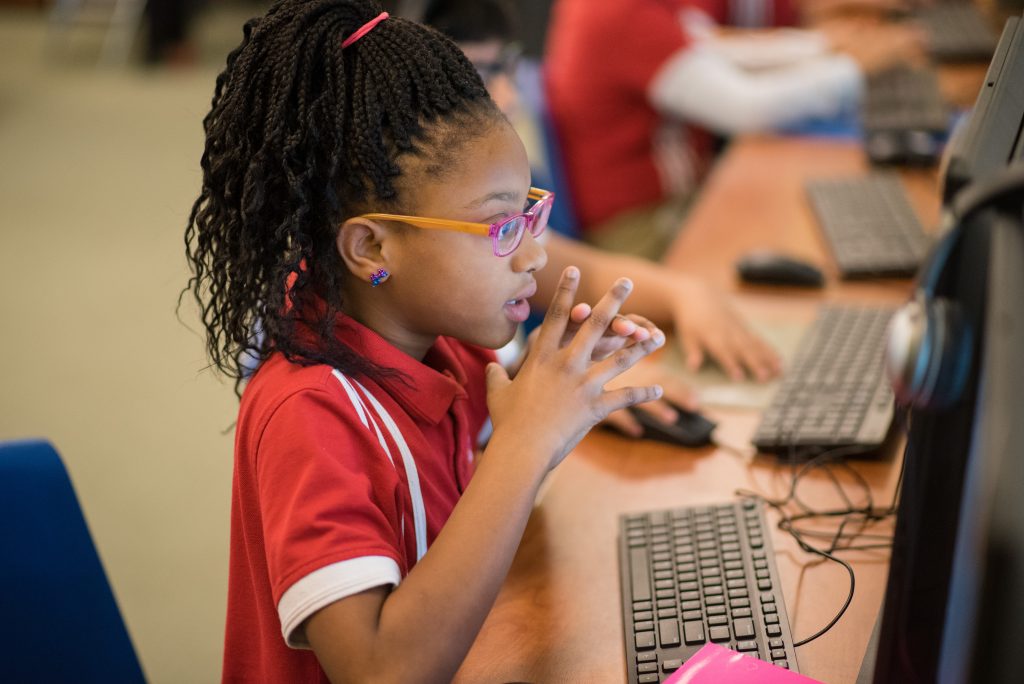
By Sabina Bharwani, Founder and CEO of Hello World
Contributed Post to Silicon Hills News
Throughout the 2018-2019 academic year and this fall, RetailMeNot has quietly donated significant funds for computer science education to over 500 students across Harmony Public Schools Austin.
Through a partnership with Hello World, 4th-7th-grade students across four Harmony campuses work directly with professional engineers to cover subjects including data science and artificial intelligence, web development, and music composition. Students visit tech companies and institutions including IBM’s Design Studio and UT’s Department of Computer Science and present computer science projects for review.
Harmony Public Schools is a system of public charter schools that provides students from traditionally underserved communities the opportunity to excel in a range of subjects, especially Science, Technology, Engineering, and Math (STEM). The network prides itself on being an innovator and leader in the STEM education space through its high bar for the quality of STEM curriculum adopted in schools and its requirements around mastery of content knowledge for educators. This is notable given the pressures many schools experience to focus on state-tested subjects.
The three entities involved – RetailMeNot, Harmony Public Schools, and Hello World – aligned on the following:
- The students engaged in the program must be those that would not have had meaningful exposure to computer science fields otherwise.
- The programs should target students before they reach high school.
- The program must involve direct and frequent engagement with engineers in computer science fields and connect what students are learning to the work of high tech industries
Each campus selected for the program is a Title 1 school comprised of a unique and diverse student population. Students at Harmony Science Academy – Rundberg, for example, are 98% Latino, 92% low-income, and 73% English language learners. Students at the Harmony School of Endeavor campus near Cedar Park are primarily Middle Eastern and the majority of families immigrated recently to the U.S.
Through computer science, students can engage with the intersection of technology and creative expression to build programs. An example of this is through our Music Composition curriculum. Students apply their own creative expression to code various musical pieces, such as this example piece submitted by a 5th-grade student titled “Darkness & Light”. Working through the curriculum in the Ruby programming language incorporates the computational and logic-based components of music theory such as counting beats and duration and using tempo and beats per minute to measure the speed of a song. Each project requires students to start with a complex task or challenge and tackle it piece by piece all the while creating music with some level of abstraction and algorithmic thinking.
The alignment around targeting students before they reach high school is multi-faceted. First, the focus for this initiative is not centered around job training or placement – the idea is that if we provide these students with the software engineering skills of today’s industry, they will be able to obtain engineering jobs that are in high demand. This is a commendable vision. However, our goal is to support underrepresented talent that will join the workforce around 2035, and a focus on computer science – problem-solving, algorithmic thinking, and creativity – is more likely to enable students to thrive than a narrower scope on coding and specific programming languages.
